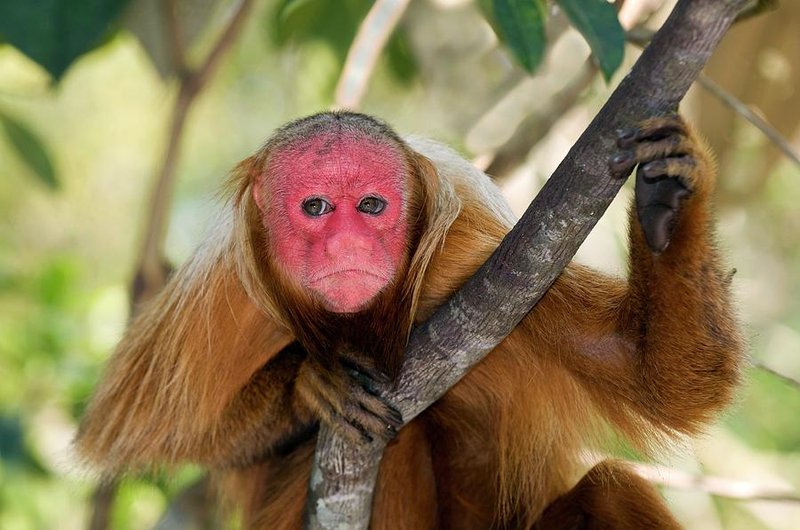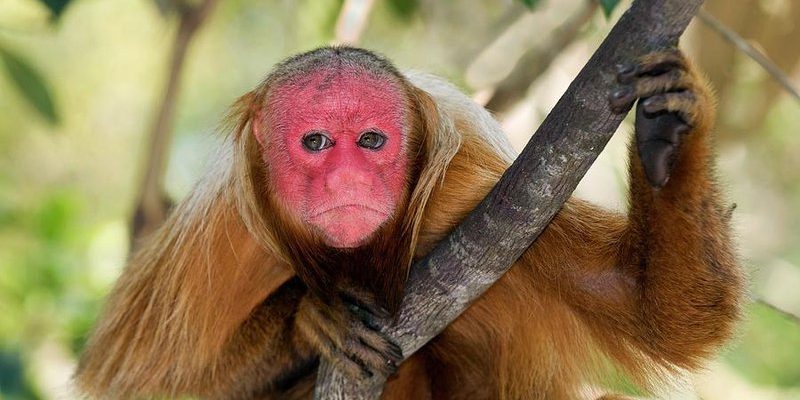
So, why should we care about the uakari? That’s a good question! Understanding their evolutionary history not only gives us insights into their unique adaptations but also sheds light on the broader picture of primate evolution and biodiversity conservation. Here’s the scoop: these monkeys are a living reminder of how life can adapt and thrive, even in challenging environments. Let’s dive deeper into the evolutionary history of the uakari and explore what makes them so special.
What Are Uakaris?
Uakaris, scientifically known as *Cacajao*, are a type of New World monkey found primarily in the flooded forests of the Amazon Basin. They are easily identifiable by their striking red faces, which stand out amid the green foliage. This change in facial coloration is not just for show; it plays a role in their social interactions and mating rituals.
These primates belong to a family called Pitheciidae, which also includes titis and sakis. Uakaris are characterized by their short limbs, long tails, and robust bodies, usually weighing between 8 and 13 pounds. They primarily feed on fruits, seeds, and insects, making them important players in their ecosystem as seed dispersers. Their social lives are just as intriguing, often living in groups to help protect each other from predators.
You might be wondering about their habitat. Uakaris are particularly adapted to life in flooded forests, which can be tricky for many species. They have developed specific traits that allow them to thrive in this ever-changing environment.
Their Unique Adaptations
The evolutionary history of the uakari is a testament to resilience and adaptation. One of the most notable adaptations is their ability to navigate the flooded forest habitat, which can change drastically with the seasons. Imagine living in a place where the ground can either be dry or submerged in water; you’d need to be pretty flexible, right?
Uakaris have developed strong limbs and long tails that help them swing through trees, making it easier to reach food sources and escape predators. Additionally, they possess sharp teeth that are excellent for cracking open tough fruit. Their eyes are located in a way that gives them a wide field of vision, allowing them to spot danger before it gets too close.
These traits didn’t just appear out of nowhere. Evolutionarily, they are the result of millions of years of adaptation to their unique environment. Their social structures also evolved to enhance survival—living in groups helps them keep watch for larger predators like ocelots and harpy eagles.
The Uakari’s Place in the Primate Family Tree
To understand where uakaris fit in the grand scheme of primate evolution, we need to take a step back. The primate family tree is quite intricate, with branches that diverged millions of years ago. Uakaris are part of the Pitheciidae family, which split from other primate families during the Miocene epoch, around 23 to 5 million years ago.
As the Earth’s climate changed, so did the habitats of many primates. Uakaris adapted to the Amazon’s unique conditions, leading to distinctive traits that set them apart from their relatives. For example, their bright red faces evolved as a way to communicate emotions and physical health to others in their groups. This highlights the importance of social behaviors in their survival.
Interestingly, uakaris are often compared to titi monkeys and sakis, which also inhabit similar environments. While all these primates share a common ancestor, their evolutionary paths took different turns, resulting in the unique characteristics we see today.
Conservation Status and Threats
Despite their fascinating evolutionary background, uakaris are facing significant threats. Deforestation, habitat destruction, and illegal hunting have made their populations vulnerable. It’s alarming to think that the very environments that shaped their evolution are now at risk because of human activity.
The uakari is currently listed as vulnerable on the IUCN Red List, meaning that their numbers are declining and they could face extinction if urgent conservation efforts aren’t made. Organizations and researchers are working hard to protect their habitats and raise awareness about the importance of biodiversity.
You might wonder how you can help. Supporting conservation organizations, spreading awareness, or even participating in eco-tourism can contribute to the protection of these amazing creatures. Every small action counts, especially when it comes to preserving the habitats that nurtured their unique evolution.
Understanding Their Social Structure
A big part of what makes uakaris interesting is their social structure. These monkeys tend to form small groups, usually consisting of 10 to 20 individuals. Within these groups, they have a hierarchy, which helps them establish order and reduce conflict.
Imagine being at a lively dinner party where everyone has a specific role—some are busy chatting, while others keep an eye on the food. Uakaris operate similarly. They communicate through various vocalizations and facial expressions, which helps them maintain social bonds and coordinate activities like foraging.
Their social interactions are important for emotional health, much like we humans thrive on friendships and connections. Research has shown that social stress can affect their well-being, which is another reason for focusing on their conservation. When their social structures are disrupted, it can lead to decreased survival rates.
The Role of Uakaris in the Ecosystem
Uakaris are more than just charming primates; they play a crucial role in their ecosystem. As primarily frugivorous animals, they help in the dispersal of seeds when they consume fruits and then move through the forest. This process is key for the growth of many tree species in their habitat.
Think of them as nature’s gardeners. When they eat a fruit, they often pass the seeds undamaged, allowing new plants to grow in different locations. This helps maintain the health and diversity of the forest ecosystem, which in turn supports countless other species.
Furthermore, their presence indicates a healthy environment. When uakari populations are thriving, it often means that the ecosystem is balanced and functioning well. This makes the conservation of uakaris not just about saving one species but protecting an entire web of life.
In Conclusion
The evolutionary history of the uakari is a captivating journey through time, showcasing the amazing adaptability of life. From their unique adaptations to their fascinating social structures, these primates remind us of the intricate connections we share with nature. As we face ever-growing environmental challenges, understanding the importance of species like the uakari is crucial.
In protecting their future, we also protect the vibrant ecosystems they inhabit and the countless species that depend on them. Let’s appreciate these amazing creatures for what they represent—a rich evolutionary history and a call to action for conservation. So, next time you think of the uakari, remember it’s more than just a quirky monkey; it’s a living testament to nature’s resilience.

